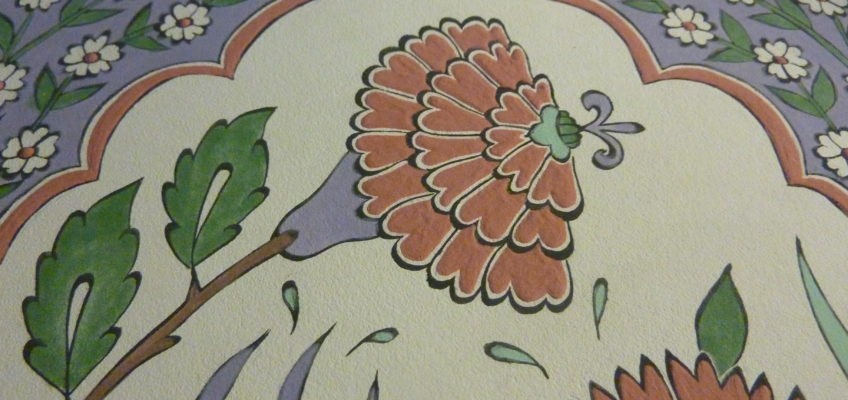‘Mankind should know that nothing is eternal. Years, centuries, and ages will come and pass and things which were considered to never be forgotten disappear in the course of time.’ – İlhan Ayverdi
The sun over the great age of İznik ceramicware began to set in the 16th century. As potters lost the patronage of the Ottoman court and cheaper Chinese pottery flooded the market, local Turkish potters could no longer compete and make a living. Consequently the once industrious centres of the artform slowed to a halt and eventually the kilns were left to go cold.
Tragically, with the death of the artisans, the techniques and secrets of the artform were also lost. As İnci Birol and Çiçek Derman write in their book (referenced in part 1 of this series):
‘[…] our forefathers, who were too busy exalting their civilization did not have the time to write its history with the precision of a Westerner and perhaps did not see the need to do that, because they were quite self effacing in expressing their skills and great efforts in their work of art due to the greatness of their sincere beliefs.’
I find this quote fascinating and thought provoking…
1) It speaks of an oral, practical remembering not a written record. We have the image of a burgeoning empire, overflowing with creativity and producing tiles and ceramicware at such a pace that the skills were shared verbally and practically through the making of the tiles, not through written records and instructions. I recently attended a seminar about oral cultures (where the spoken word is more important than the written). It was said that in an oral culture, more like Turkey, you only know as much as you can remember; instead of written ‘records’ being made, the information is communally ‘saved’ by being told to others who commit it to memory. Meanwhile, in the West (where we emphasise with the written word more than the spoken) you know as much as you have written down… or perhaps books on your bookshelf!
Looking at the loss of the İznik artform from a Western perspective, I instinctively ask, ‘Why didn’t anyone write the techniques down!?’ This carries a sense of personal responsibility on the artist. But perhaps the more apt question might be, ‘Why didn’t anyone listen to the artisans’ story?’ Here we have a sense of communal responsibility to carry the message to their future generations.
2) We see the humility of the artist. When I first started work in ceramics, I would make sure I signed my name on the tiles I produced. This is my work, I want to get the credit. But as time progressed I realised that there was different view amongst many of my Turkish friends. They still signed their name, but almost hesitantly. One even said, ‘imza atmak ayıptır’ (signing your name is dishonourable/shameful). Why?
My friends love producing beautiful artwork, but in their gifting they do not want praise that should ultimately be God’s. He is the great Creator. Who am I to claim I can create at all when all creative gifting comes from Him? But as well as respect for God, there is a sense of respect for the community. I do not want to claim glory for myself (personally) but for ‘us’ (my group/family/people). If I write my name, it is as though I am putting myself above others, singling myself out from the crowd and hence treading down my community.
And so the artist is ‘self effacing’, removing their face from the picture so that God and the community would get the praise. And so too, then, with the recording of history. Who am I that I should step away from the community and comment on what it is doing? Wouldn’t that make me an onlooker and stranger rather than part of the group? Commentary and criticism necessitates alienation and distance. Better to stay with my people.
This being said, I still sign my name and my friends sign theirs too. But there is an uneasiness about it, or perhaps a weight that such an act carries. So we sign, but with a far greater respect for those around us and the One from whom artistry originates. I give my work to the kiln. I offer myself to the community.
And so slowly, slowly the İznik Çinisi story was left untold and then forgotten for three centuries…
More next time…
(Feature photo is part of a 2-tile floral panel I designed, taken pre-firing.)


Leave a Reply